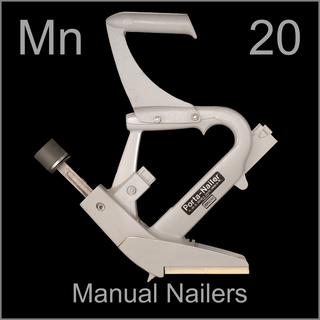 |
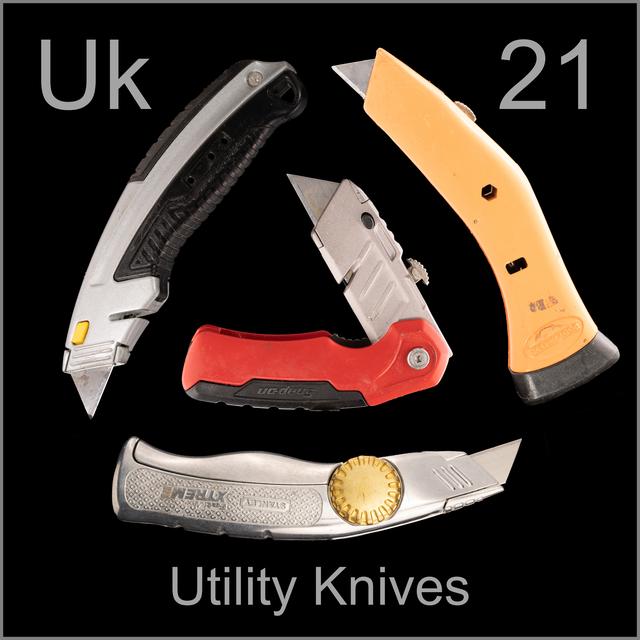
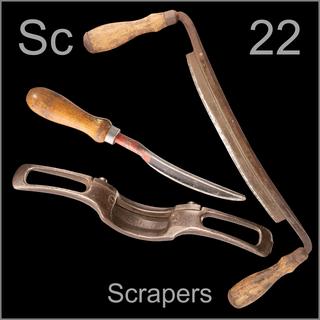 |
Leave a comment below! Or click on an individual tool to see more or leave a comment about that tool. |
|
 |
|
 |
| The modern default design for a cheap utility knife uses a trapezoidal blade with a slider on top to retract the blade fully into the body. |
 |
| Utility Knife |
 |
| Utility Knife Cartridge |
 |
| People who didn’t have access to obsidian used whatever fine-grained stone they could find, agate in this reproduction example. |
 |
| A foam cutting hot knife lets you do free-form carving of large blocks of foam. |
 |
| Utility Knife |
 |
| Utility Knife |
 |
| Utility Knife |
 |
| Fancier models use the same slider, but add rubber grips and convenient places to store extra blades. |
 |
| The most basic utility knives have a fixed blade which is always sticking out, ready to cut you. |
 |
| A bent handle can make cutting along the floor more comfortable. |
 |
| These are the most beautiful, and dangerous, keychain knives I’ve seen. They came actually kind of sharp, but fortunately also with tiny little holsters. |
 |
| Ground and polished ruby crystal knives are extremely sharp and stay that way for a long time, if treated carefully. This “swivel knife” is used for cutting patterns in leather. |
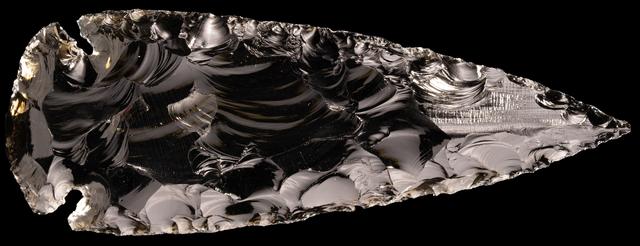 |
| Fractured glass—naturally occurring volcanic obsidian in this case—is second only to diamond in sharpness. These were among the first knives ever made, yet even today obsidian scalpels are used in some surgeries because they are sharper than steel (though more delicate). This is a modern reproduction of a stone knife of the type made by pretty much every early human society that had access to obsidian. |
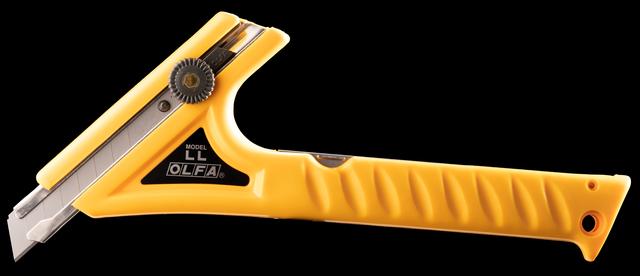 |
| This super-premium utility knife is prized for its comfortable grip and the great force you can exert with it. |
 |
| I made my own hot wire foam cutter with a length of nichrome wire. Yes, it will shock you if you touch it. This is not a safe form of hot wire cutter. |
 |
| Folding utility knife. |
 |
| This is a flexible scalpel blade meant to be squeezed between two fingers into an appropriately curved arc to cut out moles and other skin growths. I got a pack of them intending to deal with a mole by myself, and then came to my senses. |
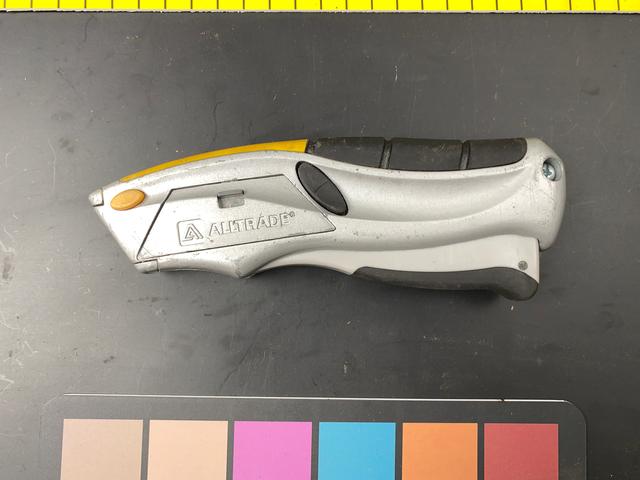 |
| This luxury model utility knife has a squeeze handle that shoots the blade out in a very satisfying way. |
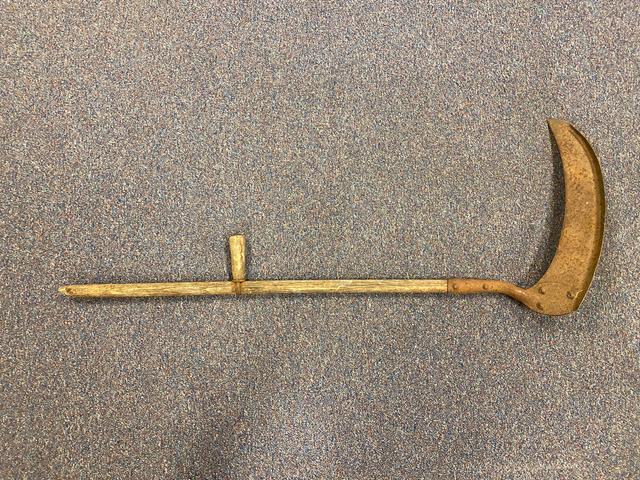 |
| The classic scythe is an appropriate tool for death, the Grim Reaper, because it is a tool for harvesting. Death uses it to harvest souls, regular folk use it to harvest wheat or cut tall grass using long, sweeping motions that take some practice. |
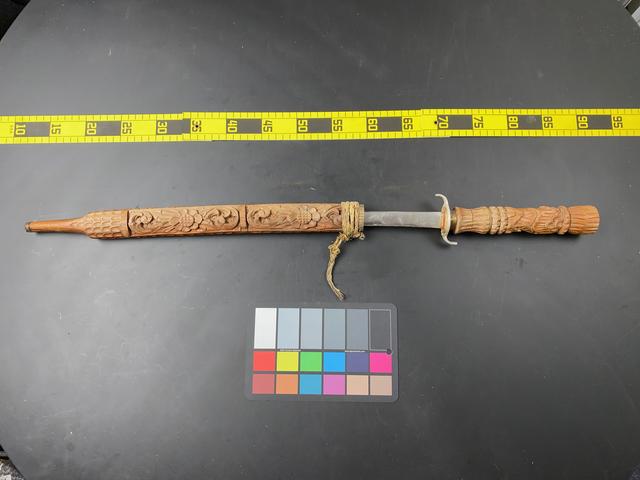 |
| I got this decorative knife in Bali as a teenager. It was intentionally very dull, almost rounded over, until I sharpened it. |
 |
| This style of utility knife uses a snap-off blade with many individual segments that store in the handle. I don’t like them because I’m always afraid the blade will snap while I’m using it. |
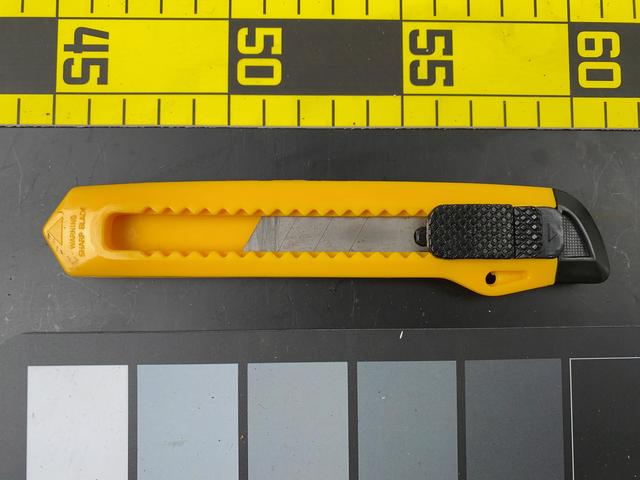 |
| Utility Knife |
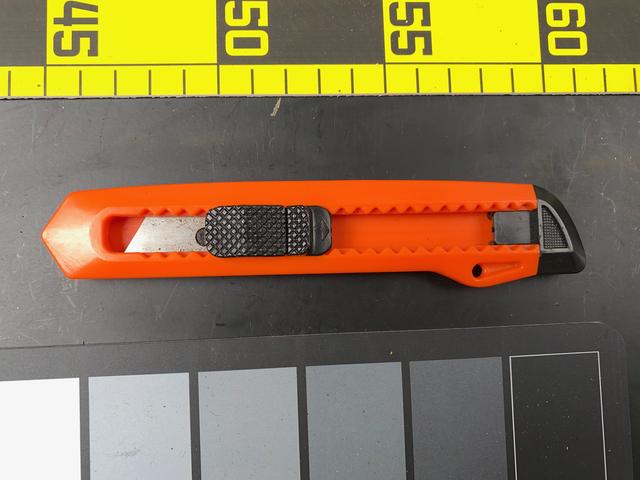 |
| Utility Knife |
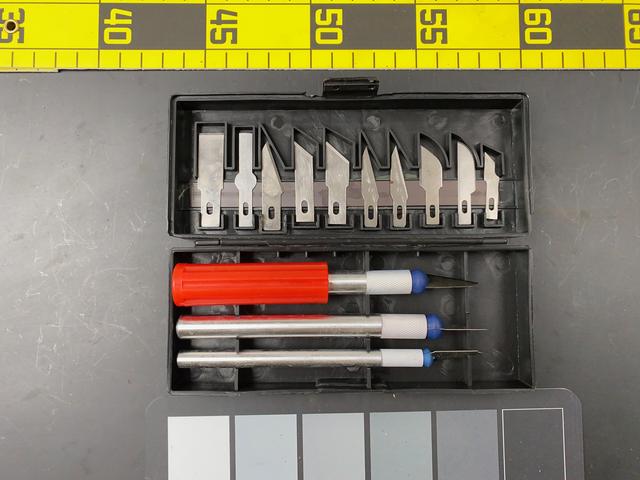 |
| X-Acto knives come in dozens of different shapes and sizes, all of which fit in a few different sizes and styles of handle. They are used in model making and crafts, but some shapes can do a bit of light carving as well. |
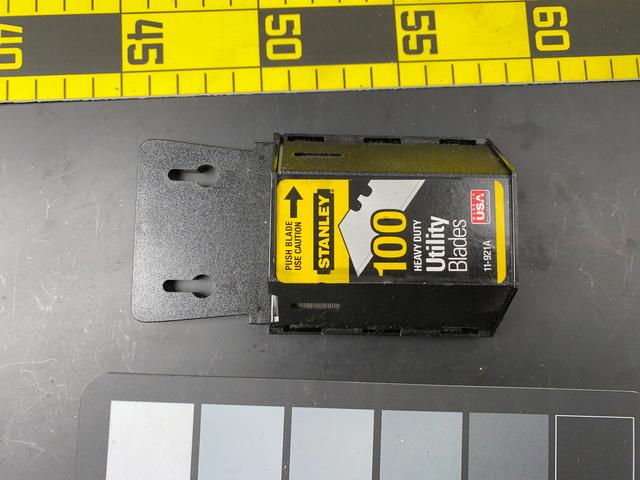 |
| Universal standard utility knife blades have to be thick enough to stand up to pressure from the handle. They are sharp, but not really razor-sharp, if by that you mean as sharp as an actual razor. |
 |
| Break-away utility knife blades are about the same thickness as normal ones. |
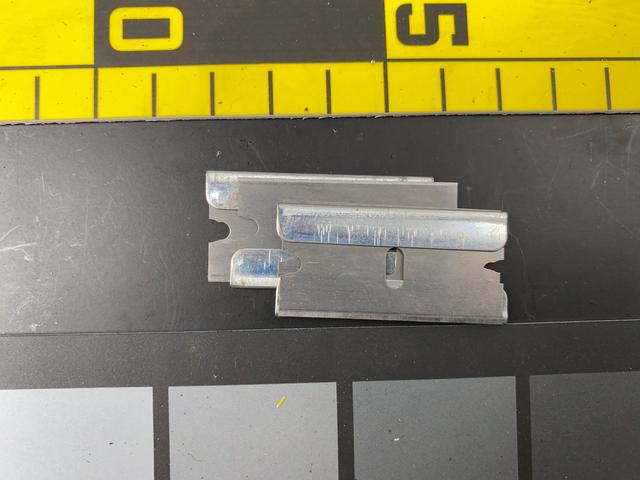 |
| Single-edge razor blades used in scrapers are a bit thicker than shaving blades. |
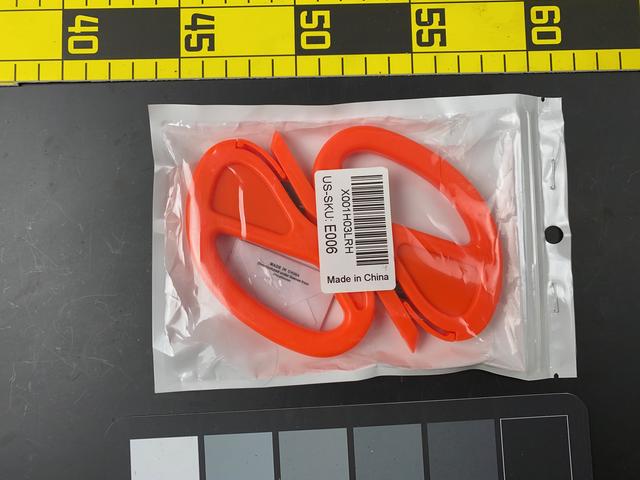 |
| Safety Box Cutter |
 |
| This tools is designed to cut medical tape and bandages without cutting the patient. |
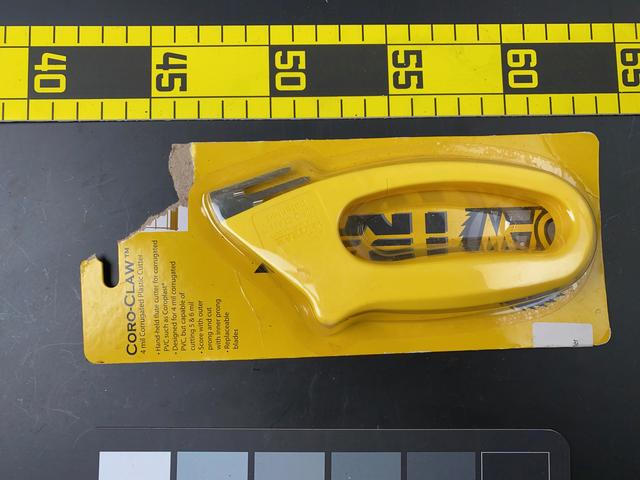 |
| Corrugated cardboard cutter. |
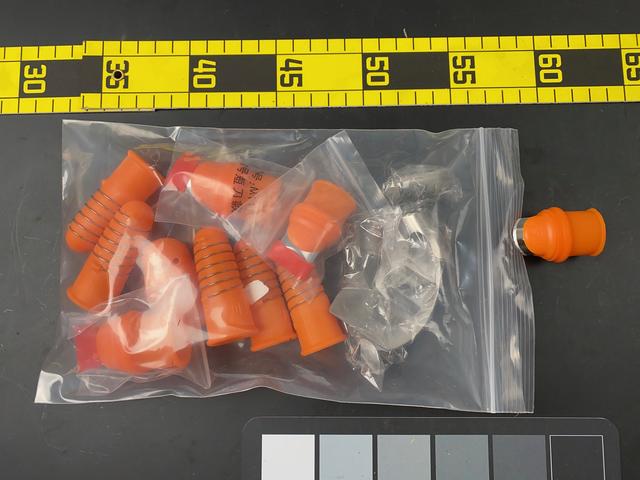 |
| I got these only because they are so cute. They are supposed to be for chopping green beans and the like, using your fingers as knives. There’s also a guard to protect your other fingers. |
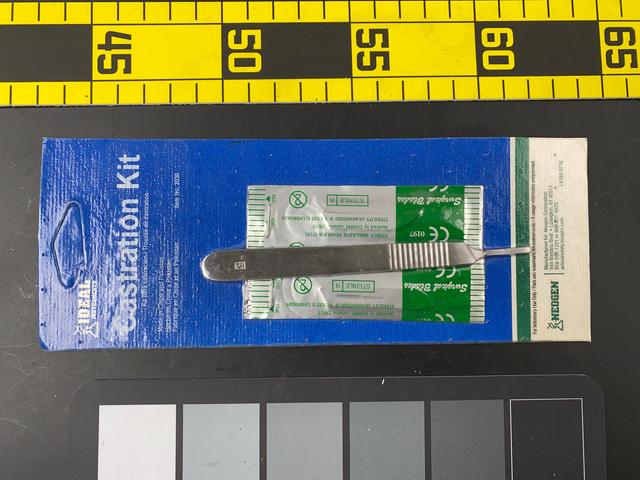 |
| The sharpest steel blades are surgical scalpels. They are used only once, both to avoid infection, and because their edges are so fine that they can’t stay sharp very long, even cutting only soft things. This one is part of a veterinary (or you get in big trouble) castration kit. |
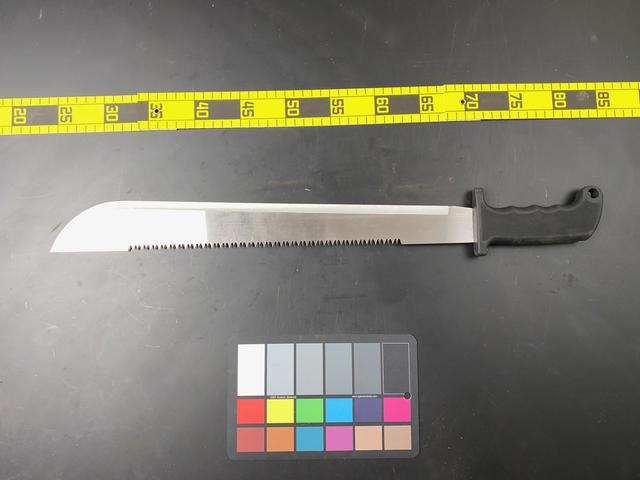 |
| Machetes are for clearing brush and hacking things up. They don’t need to be extremely sharp, and if they are, they won’t stay that way after the first few whacks at a rough tree branch. |
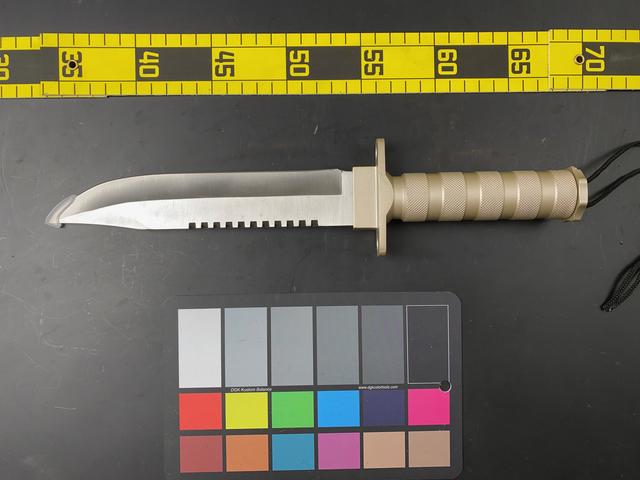 |
| A knife with a really thick, sturdy blade needs to have a concave-ground edge to be truly sharp. |
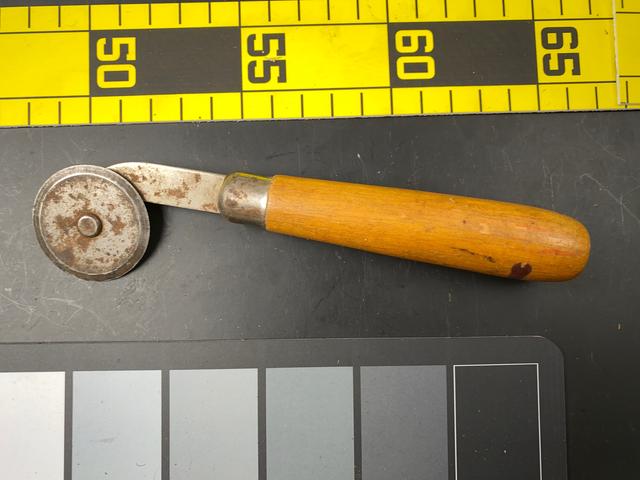 |
| This old rolling cutter has a permanent blade. I am very unclear on how you sharpen a circular blade. |
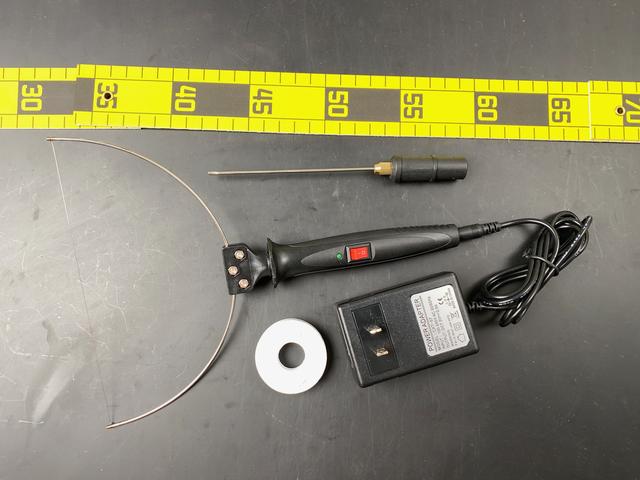 |
| Using thinner, higher-resistance wire you can make a battery-powered foam cutter. |
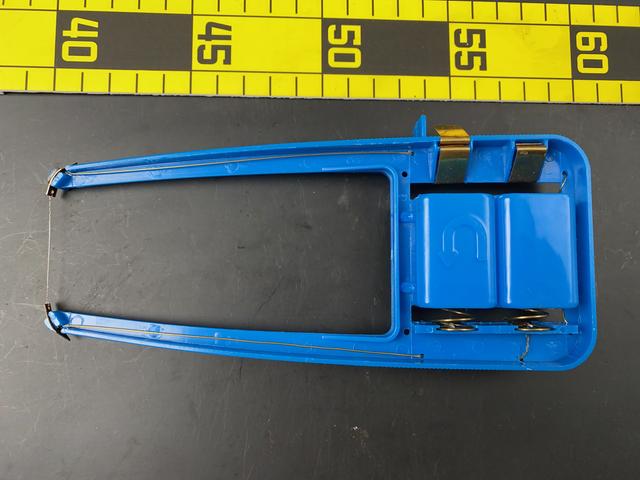 |
| Foam Cutter |
 |
| This is one of Nick’s fancy tools. Normally titanium would be a terrible material to make a blade out of, because it’s quite soft (strong for its weight, but soft compared to steel). But this blade is a mix of titanium and ceramic powders, sintered together much like a diamond concrete saw. As such it is not particularly sharp. Instead it’s like a micro-serrated blade that abrades more so than it slices. Apparently it works really well, and because the titanium is soft, it slowly wares away, exposing new, sharp ceramic particles. (See the discussion of diamond saws in my book for more detail on this fascinating process.) |
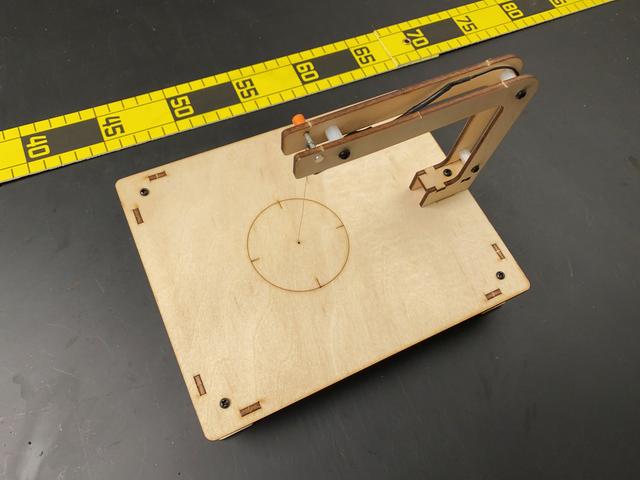 |
| Cheap Foam Cutter |
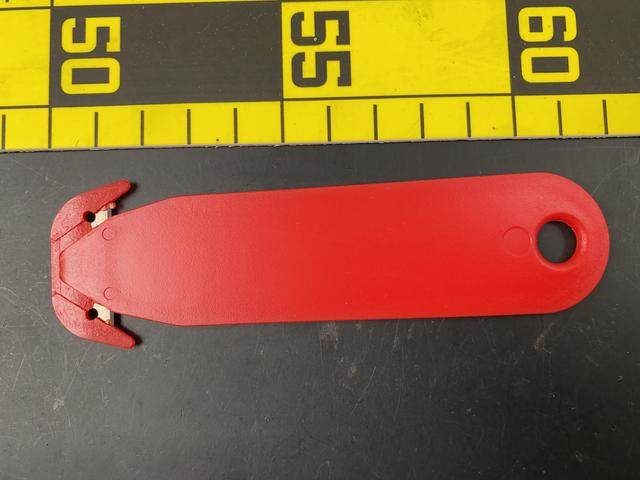 |
| Safety box cutters slide tape or cardboard, but have a shield on the other side of the blade to protect the contents of the box. |
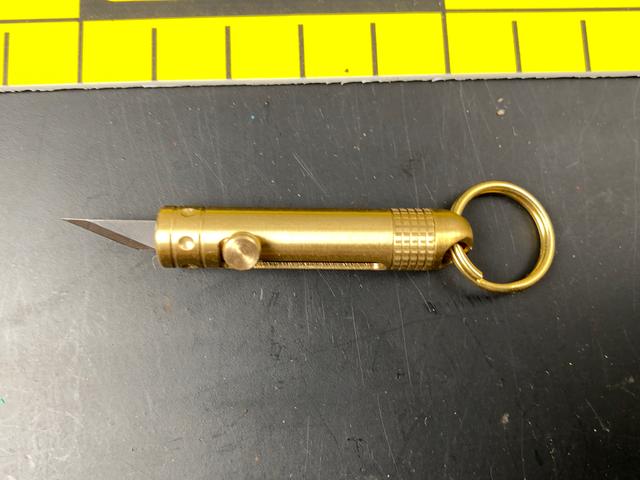 |
| This keychain knife is no toy. It has a blade similar to an X-Acto knife, which means very sharp. |
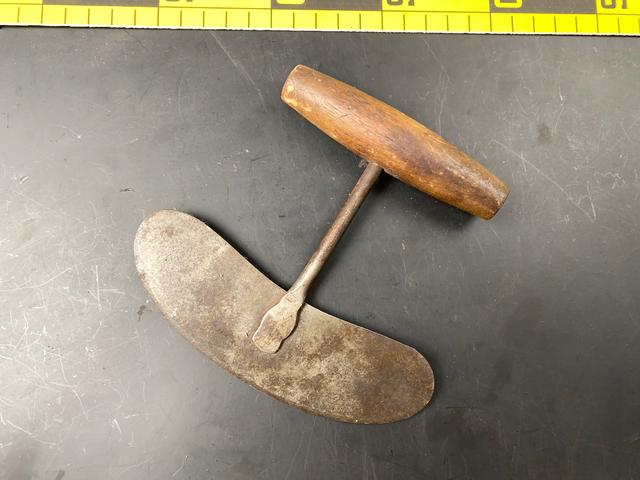 |
| Knives come in all shapes and sizes. This tool, reminiscent of the mezzaluna (moon-shaped knife) your foodie friend uses for chopping organic soy sprouts, is used to cut leather. |
 |
| This antique model uses non-standard (today) blades, but at least they retract. |
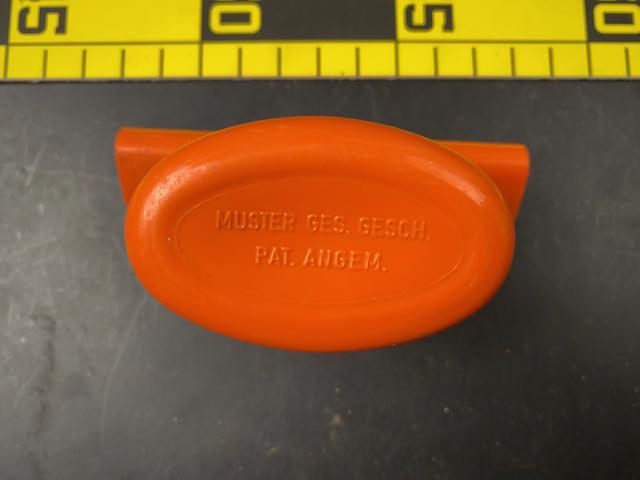 |
| Romex slitter. |
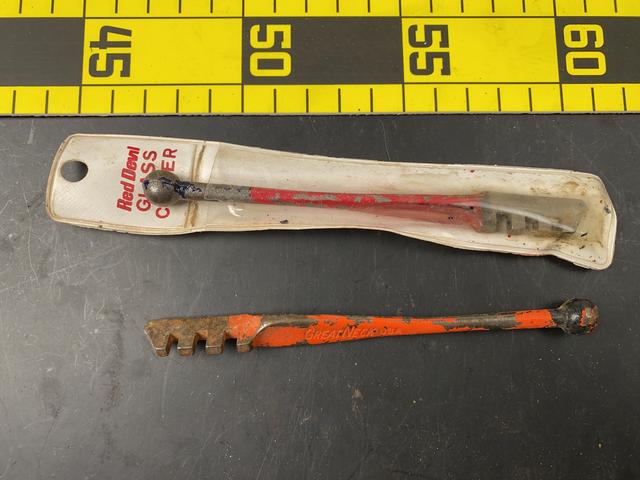 |
| Simple glass cutters actually work quite well, as long as the glass isn’t scratched up already in other directions. |
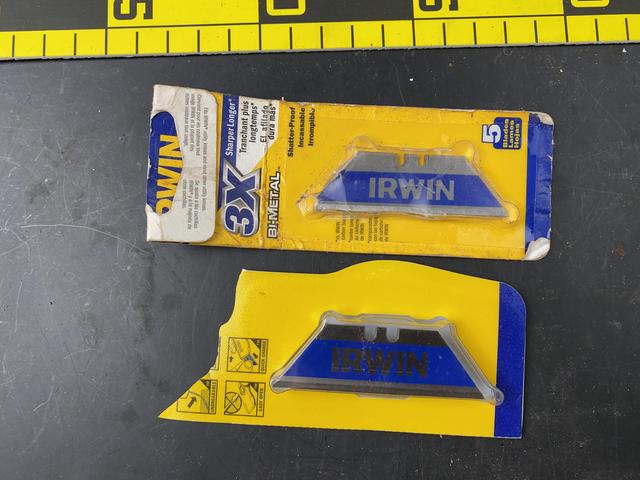 |
| Utility Knife Blades |
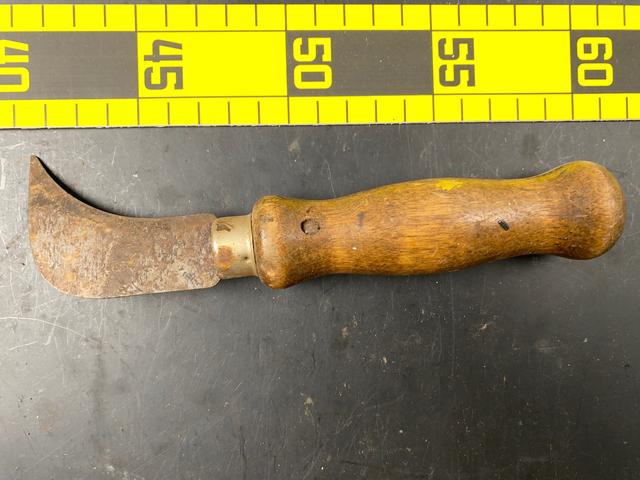 |
| This knife is used to cut linoleum flooring. |
 |
| If putting new blades in is too much work for you, a new design uses cartridges with ten blades that you replace in the knife handle as a unit! The blades can then be fed out one at a time as needed. |
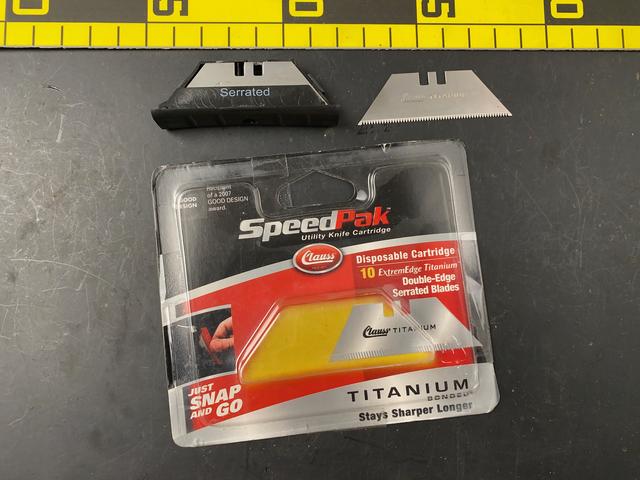 |
| Serrated blades are sharp in a different way, more like a saw than a knife. |
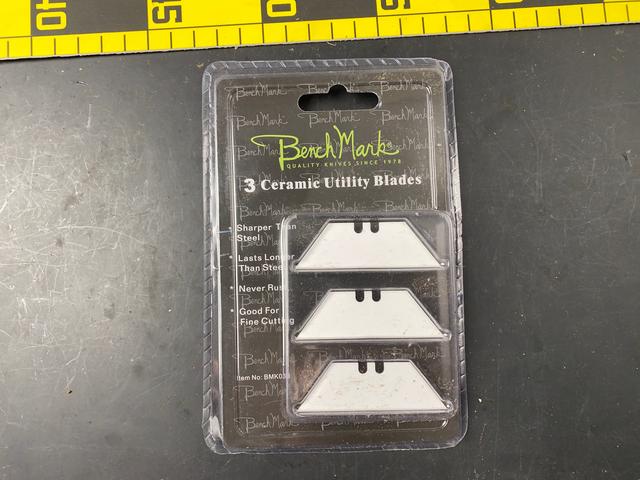 |
| These ceramic (zirconium oxide) utility knife blades are made of the same thing as fancy ceramic kitchen knives. They are expensive and easy to chip, but definitely very sharp. |
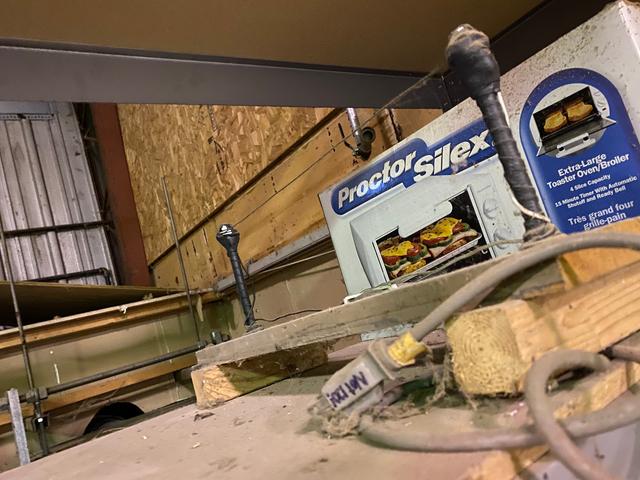 |
 |
| Utility knife. |
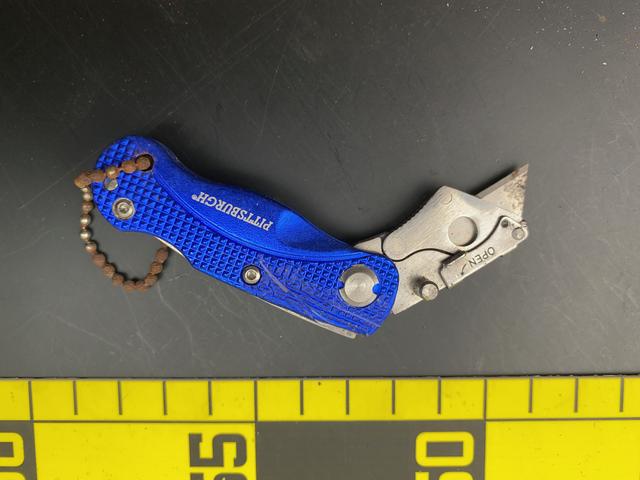 |
| Utility knife. |
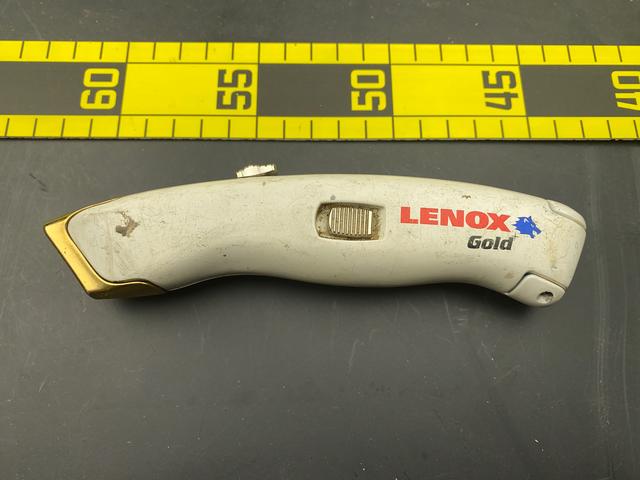 |
| Utility knife. |
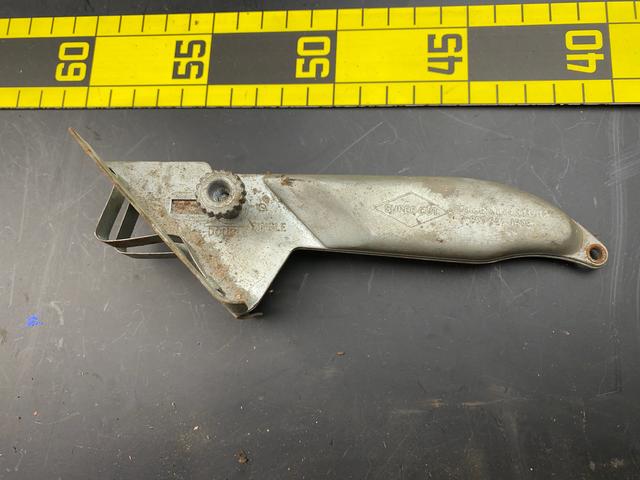 |
| Odd utility knife. |
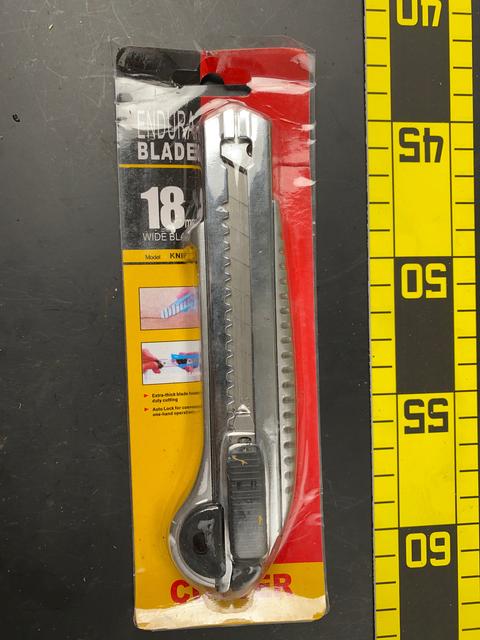 |
| Utility Knife |
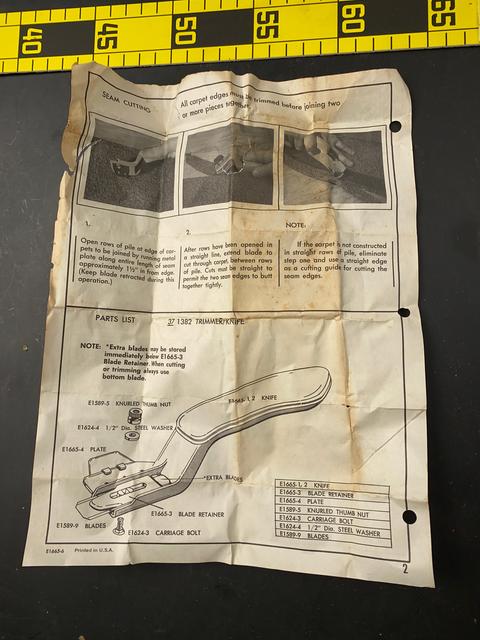 |
| This version is specifically designed for cutting carpet: a non-sharp metal plate guides the knife between rows of carpet pile. |
Do you have a better example of this kind of tool? Let me know by leaving a comment, and include a picture of it if you can so everyone can see!